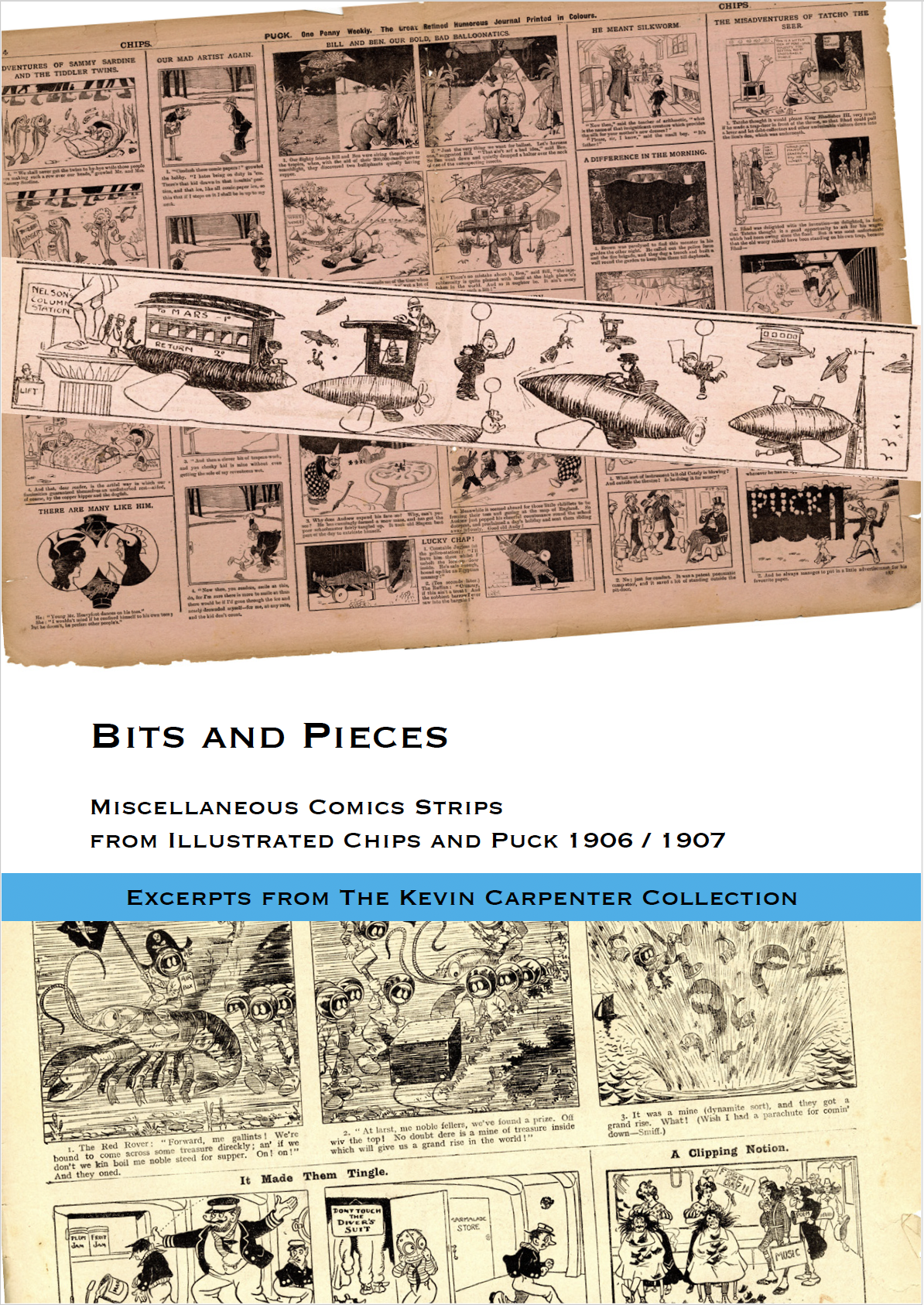The Kevin Carpenter Collection of Early British Comic Papers
Throughout his years as a teacher at Carl von Ossietzky-University in Oldenburg, Germany, Kevin Carpenter has collected his own catalogue of early British comics to be able to show how these work, how stories were told in text-adventures as well as in caricatures and comics, how themes re-appeared and changed when re-told, from the so-called penny-dreadfuls to text-adventures and in comics.
The material allows us to look not only into the bandwidth of productions at the time, understand the development and establishment of a dedicated section in publishing and its titles, figures, styles, and genres. Also, influences on and interdependencies between individual publications become visible and allow to understand better in what way social issues, cultural changes, and historic events and incidents were taken up in what ways in the comic papers then. It invites to discover forgotten contributions to the history of comics as well as the narrative culture of its time – good and bad.
Because of the doors it opens for research and contemplation, I want to publish selections from it. This way, more than just single representative examples become easily accessible and allow to understand the narrrative strategies, routines, but also the extend of experimentation and development in these early comics. They let us understand how culture, how zeitgeist was expressed.
Three Volumes (for a start):

Weary Willie and Tired Tim. Perfecting the Mold for Knockabout Tramps.
Trelleborg: New Smallprint Press, 2025:
ISBN: 978-91-981603-9-0 (print)
ISBN: 978-91-990299-2-4 (pdf download here)
Tom Browne created two amiable characters he called Weary Willie (or Willy) and Tired Tim for Harmsworth’s comic Illustrated Chips in 1896. These tramps, bold, brazen and wily, constantly in scrapes in a win-one lose-one rhythm, exude confidence and cheerfulness. In a late-nineties strip, Willy and Tim breeze into view, strolling round the city, their city, observing, commenting, and intervening at whim. They were a huge success and continued to appear on the cover page of Chips every week until 1953, drawn by various hands, for the last forty-four years by Percy Cocking.

Casey Court or Billy Baggs and the Casey Court Nibs.
Trelleborg: New Smallprint Press, 2025:
ISBN 978-91-981603-7-6 (print)
ISBN: 978-91-990299-1-7 (pdf download here)
Casey Court was created in 1902 by Julius Stafford Baker. After he stopped drawing it in the 1920s, it was continued by different artists until 1953, amongst others Walter Bell, M.C. Veitch, H. O’Neill, Louis Briault, and Allan Morley, and Charlie Pease (which was Albert T. Pease). While examples in this volume span the years 1904 - 1932, most were originally published 1907.

Bits and Pieces: Miscellaneous Comics Strips from Illustrated Chips and Puck 1906 - 1908.
Trelleborg: New Smallprint Press, 2025:
ISBN: 978-91-981603-9-0 (print)
ISBN: 978-91-990299-2-4 (pdf download here)
This volume includes example-strips that allow to understand how the Edwardian mindset was expressed in early comics and caricatures. While more research into alliterative titles of early comics remains for the future, other aspects are more than obvious: We have omitted the more racist examples on purpose as they do not merit re-publication. But the tone and moods of the times with jingoistic and other undertones, how different social classes were addressed in these comics papers, is getting quite clear from the included material:
Chutney the Charmer
Maggie the Magpie
Sammie Snail
Adventures of Sammy Sardine and the Tiddler Twins
Silas the Submariner
The Little Stowaway
The Newlyweds
Dr. Patent’s Academy
The Misadventures of Tatcho the Seer
Sammie the Soothsayer
Merry Andrew
Billy Smiff’s Pirates
Bill, Ben, our Bold, Bad Balloonists
Sir Walter Raleigh
The Duke of Diabolo
Gussie, the Giddy Ghost.